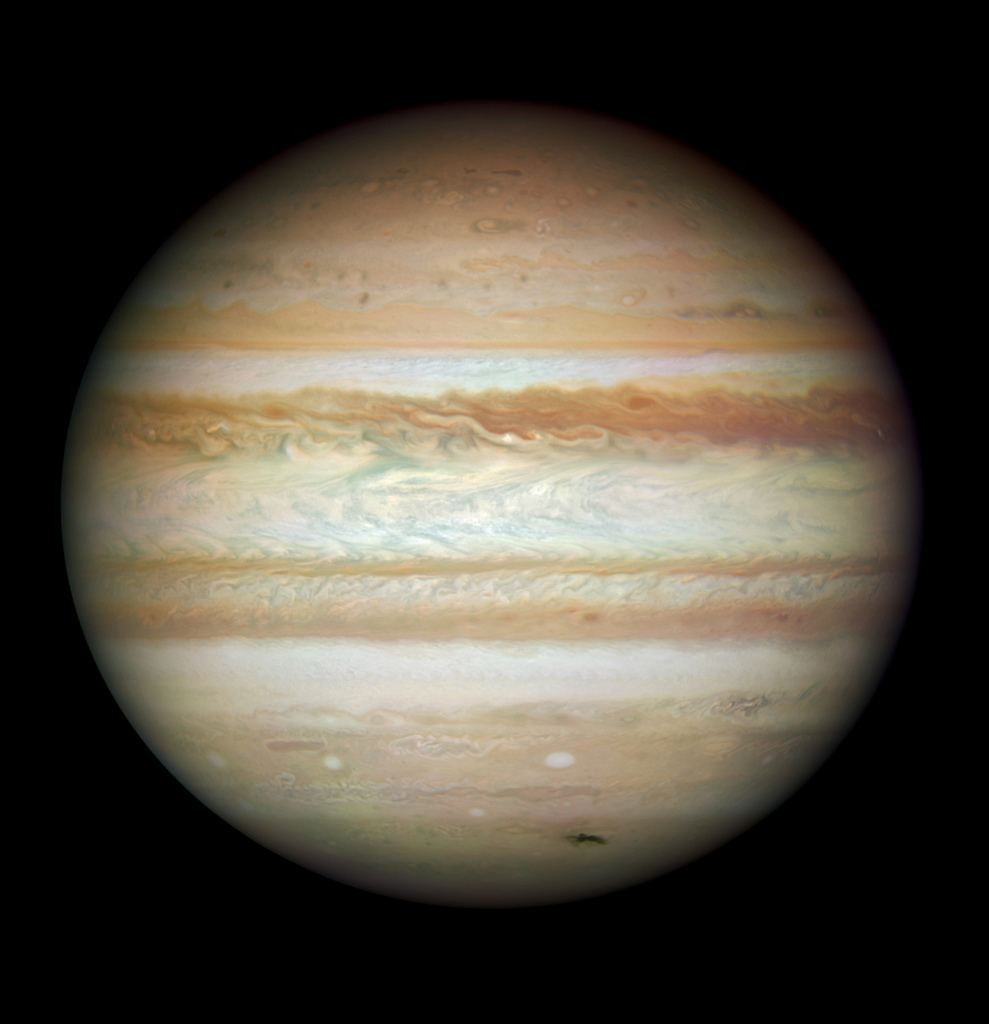
Jupiter is the largest planet in the solar system and the fifth one from the sun. It was named after the Roman god of the sky and thunder. The ancient Roman god, Jupiter, was, in classical mythology, regarded as the chief of the gods. The Romans also called him Jove. The ancient Greeks called him Zeus. The astronomical symbol for Jupiter resembles the number 4 in shape. It represents a lightening bolt, which the ancient Romans believed that their god threw during thunderstorms.

Jupiter is the third brightest celestial object in the night sky. It is bright enough to cast shadows.
Jupiter is a giant gaseous planet without a well-defined surface. Its atmosphere consists primarily of hydrogen and helium. 75% of the atmosphere is hydrogen and 24% is helium. The remaining 1% consists of traces of oxygen, hydrogen sulfide, neon, methane, ethane, phosphine, carbon, sulfur, benzene, ammonia, and water vapor. Temperatures on the planet range from 152ºF ( 67ºC) at 10 bars of atmospheric pressure to 64,300ºF (35,700 ºC) near the planet's core. So, the planet is really just a big, giant ball of hot gases with very little solid surface.
Jupiter has a powerful magnetosphere and at least 79 moons. The largest moon is Ganymede. It is larger than the planet Mercury.
The surface gravity of Jupiter is about 2.528 times that of the Earth's. A 160 pound man would weigh about 404 pounds on Jupiter. A 110 pound woman would weigh about 278 pounds there. A 30 pound small child would weigh about 76 pounds on the giant planet. One could experience some significant health problems after traveling there, but there is not much to stand on since it consists primarily of hot gases.
Jupiter completes its orbit of the sun in 11.862 years or 4332.59 Earth days. One Jovian day lasts about 10 hours (9 hours 55 minutes 30 seconds). In its orbit, it reaches its most distant point from the sun at about 510.4 million miles (816.62 million kilometers) and its closest point to the sun at about 462.8 million miles (740.52 million kilometers).
NASA and other space agencies have sent several probes to Jupiter, some of which include the Pioneer missions, the Voyager missions, the New Horizon probe, and the Galileo orbiter.

